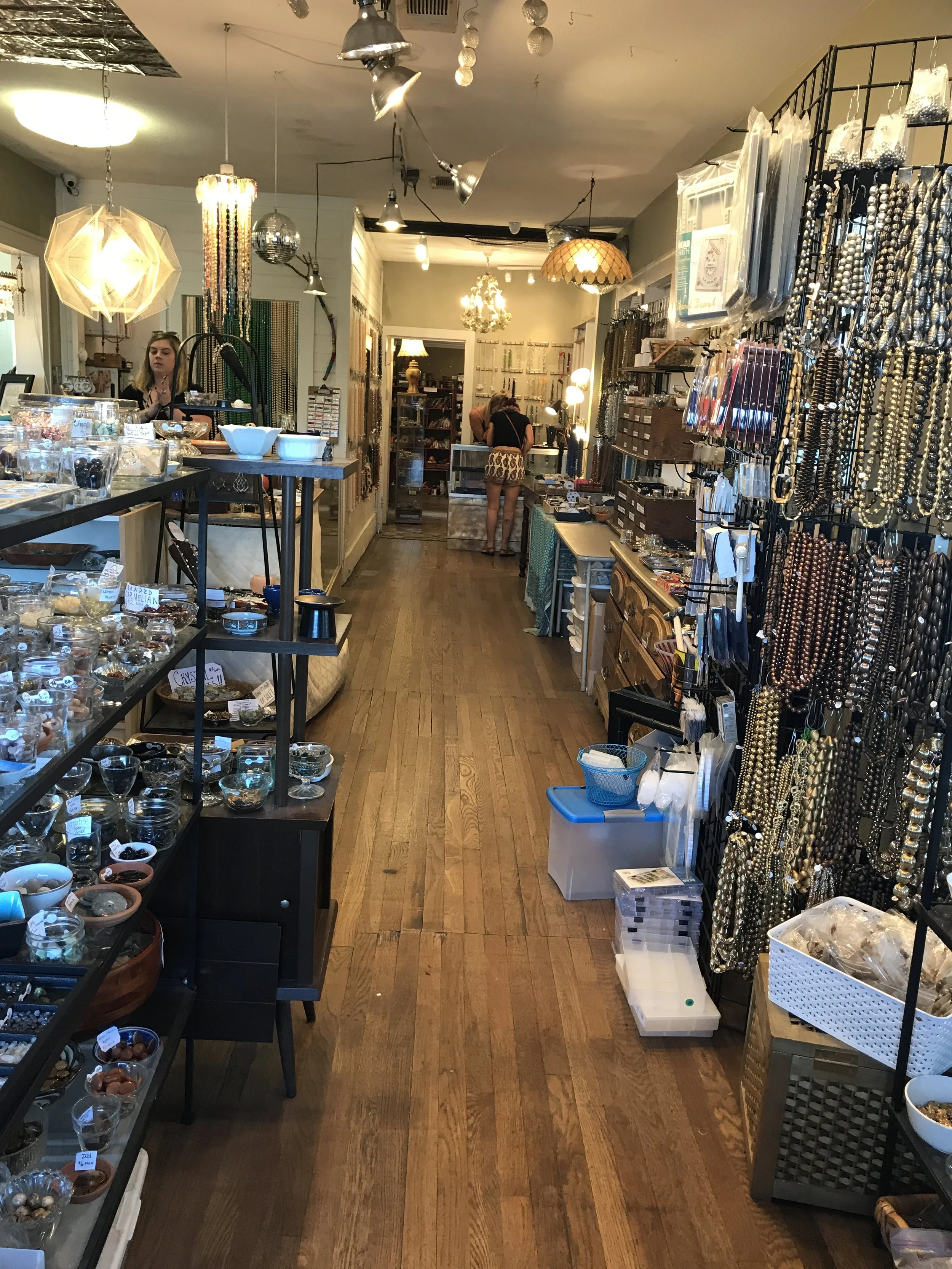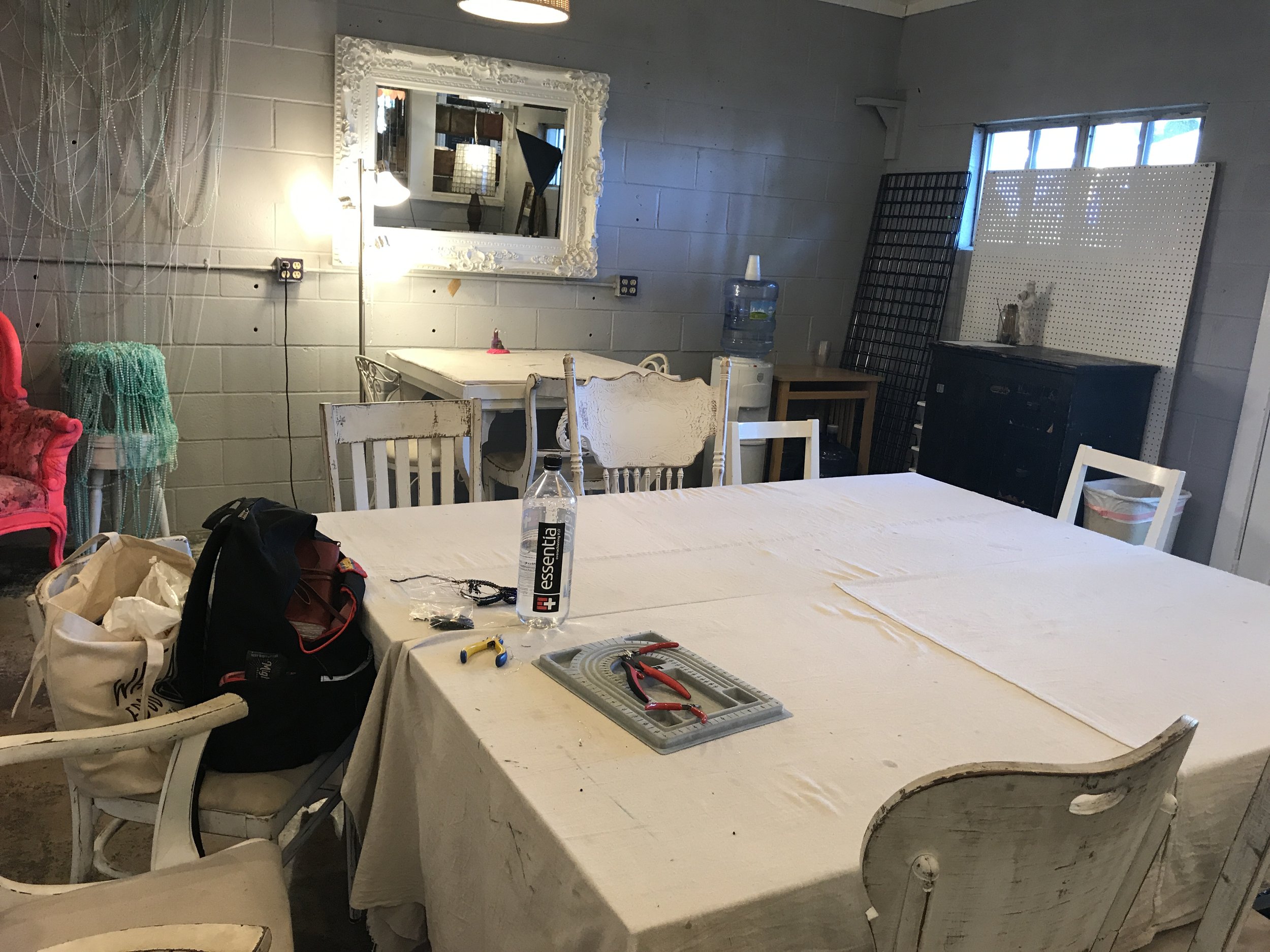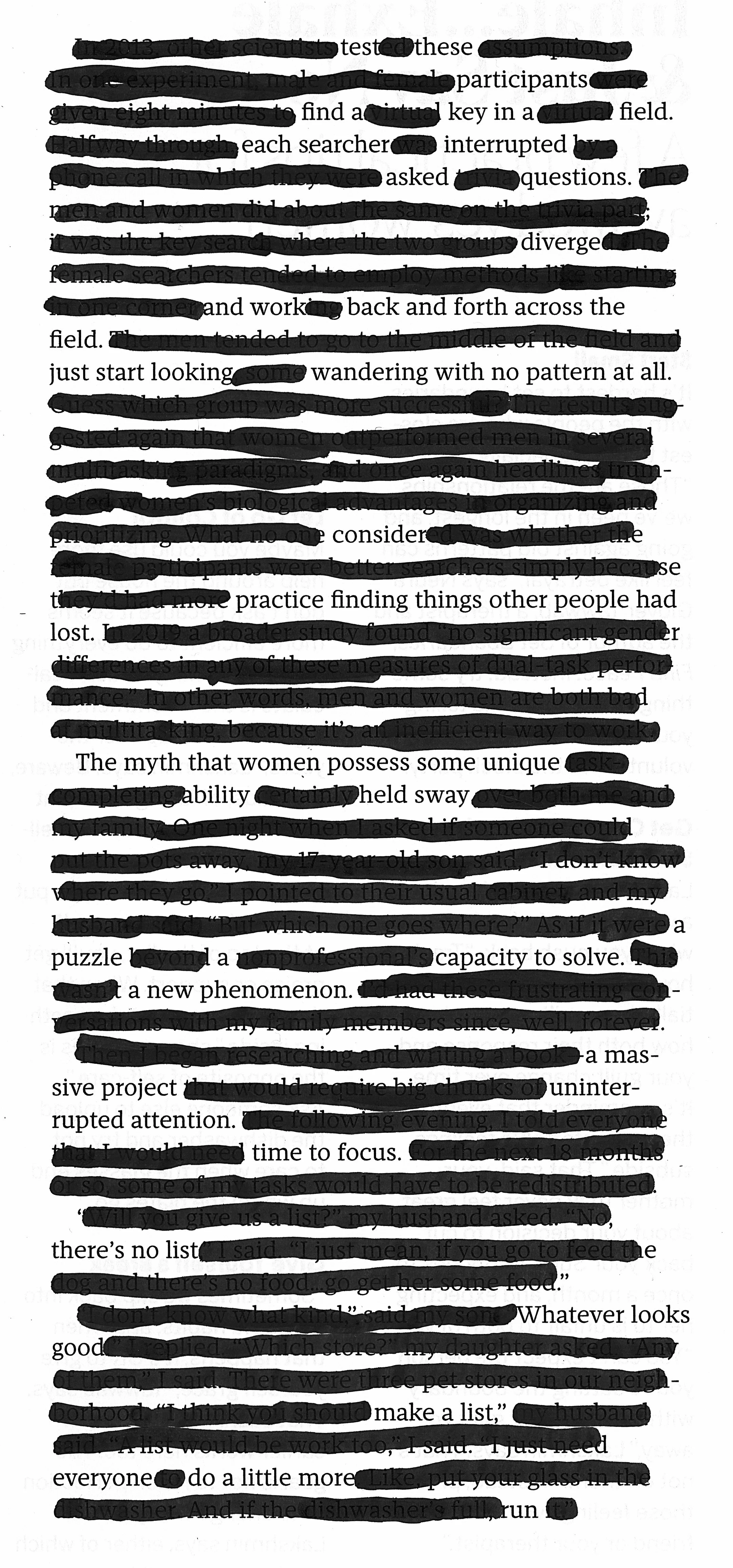Spark your creativity: 5 exercises
My beloved (now-gone) bead store in Austin
In a study, Girija Kaimal, assistant dean for special research initiatives and an associate professor in the creative arts therapies program at Drexel University, found that for the majority of people, making art for as little as forty-five minutes reduces the stress hormone cortisol, no matter your skill level or experience. Making art is physiologically calming. Girija explains, “The study was set up with an art therapist in the room who could provide support as needed to allow for authentic self-expression. There was no judgment or expectation, rather participants were encouraged to focus on the process and to feel safe, thus reducing stress and anxiety.” She reminds us that anyone can do this at home with simple materials if they create without value judgments.
Susan Magsamen and Ivy Ross, Your Brain on Art: How the Arts Transform Us, page 43
For most of my 20s, I was creatively blocked. There wasn’t much extra time outside my graduate classes and homework, and I used most of my hyperfocus just trying to survive the program. But when I got to the hardest part—finishing my dissertation in less than four months so I could start my postdoc—I floundered.
I really wasn’t sure I could do it.
All I could think about was my potential failure, and what it would mean.
And then I found a bead store (sadly, now closed due to Austin tech bro gentrification).
I had played around with jewelry-making before, but never more complicated than stringing beads on a string, so I took some classes. I ended up spending a lot of my afternoons the summer of finishing my dissertation in the basement of a bead store, wire-wrapping my strange creations.
I was never an expert, but that release did make doing the thing I was about to be declared an expert in–being a scholar of political philosophy and law–a lot easier.
Everyone is creative.
Let me repeat: Everyone is creative.
Creativity is not just for professionals, or trust-fund kids who get their projects bankrolled. It’s not just for people who won’t grow up or people who are weird/mentally ill/drunk/starving.
Everyone played as a kid, and the fact that we stop because society tells us only special people given the “artist” designation get to create is a disservice to us all. (So is making everyone monetize their hobbies into side hussles.)
Below are some quick and easy exercises to try if you feel blocked, or you haven’t tried anything creative in a while. I promise, you absolutely cannot get it wrong. See the quotation at the top of this post if you doubt me on this!
Go through a magazine (or even an old pinterest board) and pick up images that grab you!
This sound too simple? I bet it does, but practicing picking exercises your intuition and the basic muscle it takes to create interesting collages—namely, selecting whatever GRABS you. It might feel safer to choose whatever you think looks nice or fits your aesthetic. To avoid anything scary or weird or unsettling.
But we have an uphill battle these days to keep our own voices intact. We’re constantly fighting against the constant advertising and AI slop, the curated social media and aesthetic “shoulds” of your life. And if you figure out what grabs you, it can give you guideposts of where you want your life to go.
2. Make poetry out of a page of random text
You might try cross-out poetry where you can still see the original words, blackout poetry where you obscure the irrelevant words (example below), or erasure poetry where you cut out the words altogether. I’ve been experimenting with blackout poetry recently, and it’s fascinating what I’ve learned.
A piece of blackout poetry I made this week, which feels more like a quest than a description of a study of men doing learned helplessness
The pages I chose from a magazine were full of advice on budgeting for people who are well-off and just need to tinker at the edges (not me! not most people right now, no?) and women whose husbands and children refuse to help them out to the point of sabotage. After my Sharpie, those articles, full of practical advice to change your self to fit better in the existing world, became concise exhortations to be oneself! To go on a quest! To buck the system if it doesn’t work for you! (Pretty telling of where my mind’s at, no?)
3. Make a mini-collage
Take an image that grabs you and add text on top. You might go the route of those old-timey images of women with sardonic quotations on top. You might make something inspirational to tack to a corkboard. Or you might go for social commentary. But having an image and words together can be more powerful than either solo, in my not-so-humble opinion, and make the piece more understandable to future you.
4. Origami
Origami! Look up a tutorial online, and take a page from a magazine or catalog–even junk mail–and fold it up. That page will be transformed by folding it, which will help you see the world differently. Origami can be symbolic and has great meaning in its original context. To be fair, I have never really gotten over reading Sadako and the Thousand Paper Cranes in 1996–I won’t spoil it, but making 1000 cranes is supposed to grant her a wish, according to Japanese lore.
But a simple bird could be an object that brightens your day when you see it; a flock of birds could be turned into a mobile for a cool kid in your life. There are tons of tutorials, written with diagrams and in video format–here’s good one according to origami folks.
5. Test out synchronicity out in the world: choose a color, and try to notice every time it comes up in your life
I first learned about synchronicity when I did Julia Cameron’s creativity program, The Artist’s Way, at the urging of a grad school friend. Cameron explains that Jung’s concept of “synchronicity [is ...] loosely defined as a fortuitous intermeshing of events.” For Cameron, synchronicities appear when we commit to our dreams, our lives, our souls, but in this case, we’re starting small. What if you could see this very specific color all over the place, just by being curious about it? What else might you notice if you pay attention to the world in this way?
Ultimately, the first step to creativity, whether it’s a one-off, part of a hobby, or part of your professional life, is to experiment. To notice. To play. To see a new story when you could lean on an old one instead. To imagine a different world.
And, at the very least, creativity is an antidote to the hellscape of a world we’re currently in.
Frankly, at this point, anything that can safely lower my cortisol is a win in my book!
Let me know if you try something new! I’ll be expanding on these methods in the next few posts.
And if this piques your interest and you want to explore working with me in coaching, check out my current offering here (limited to five people, so get it while you can) or schedule a consultation call here.


